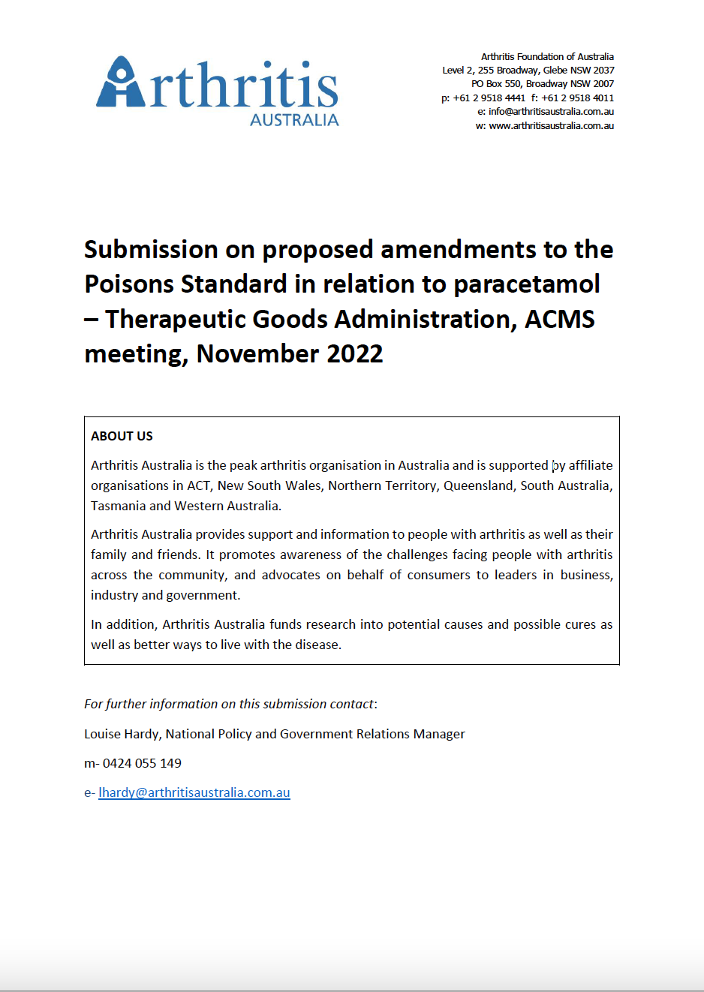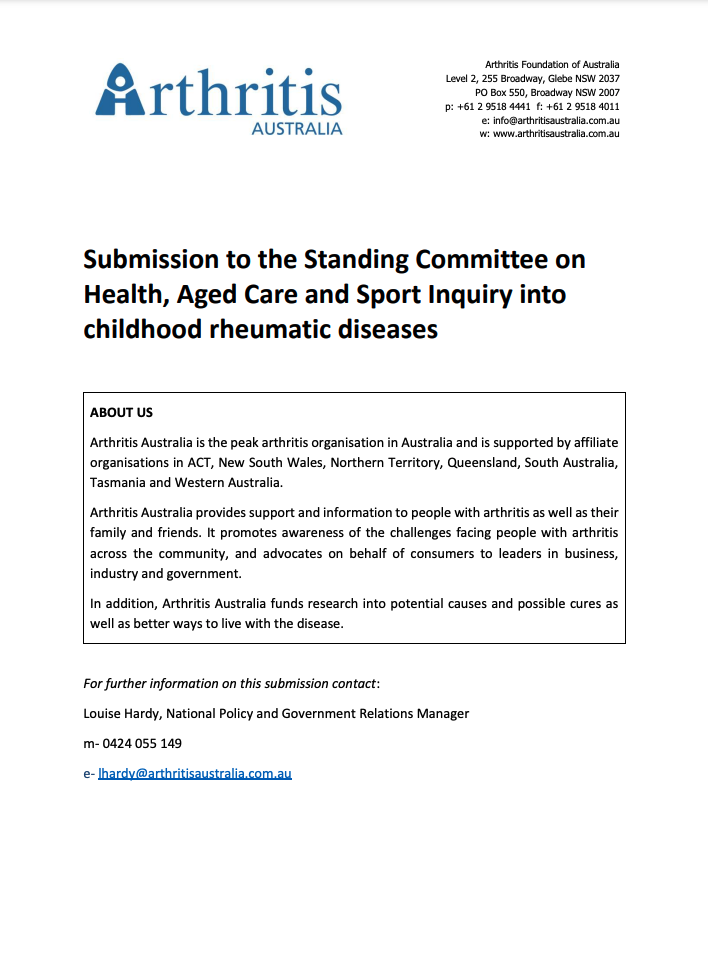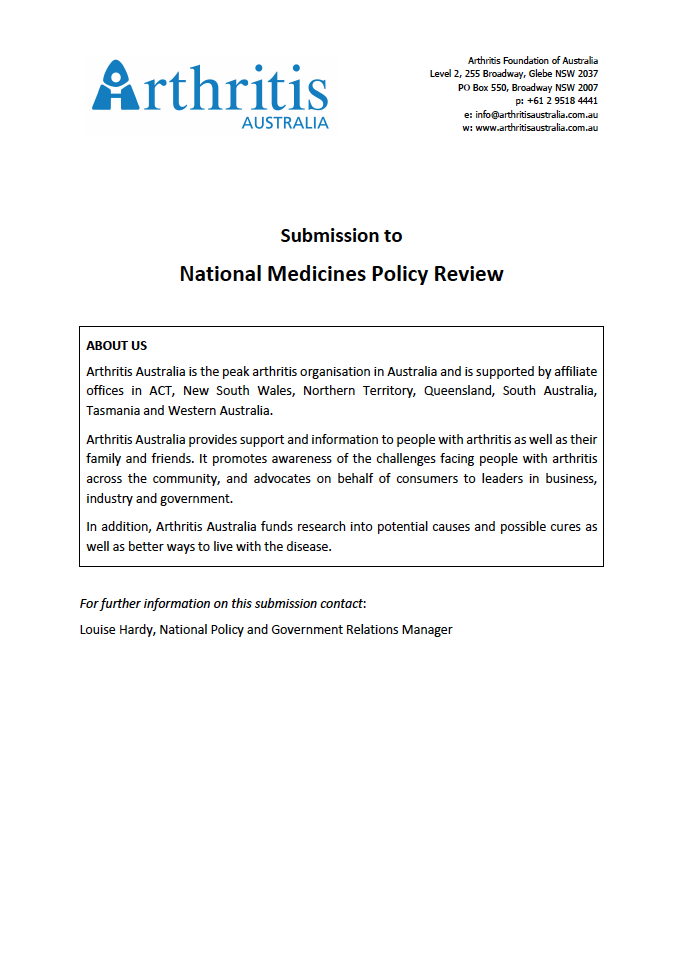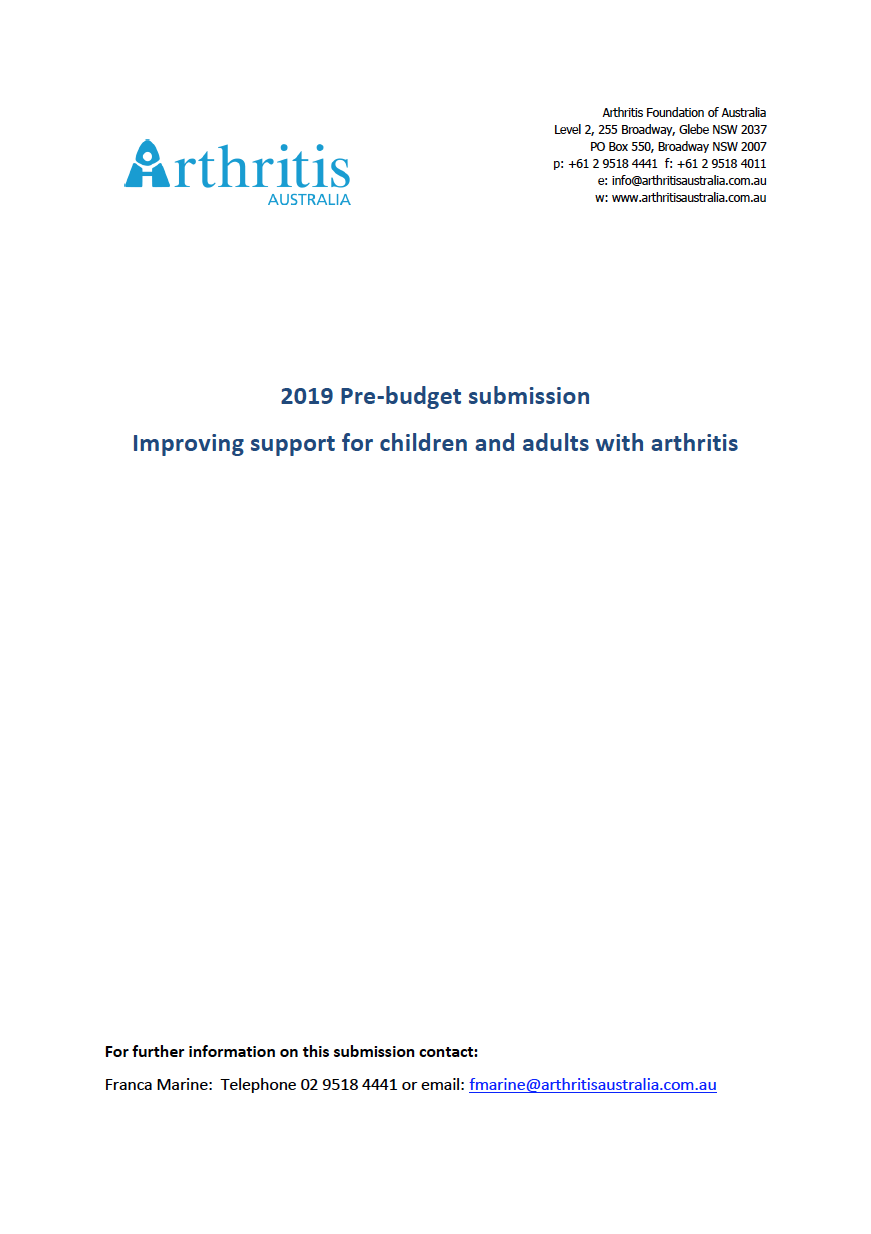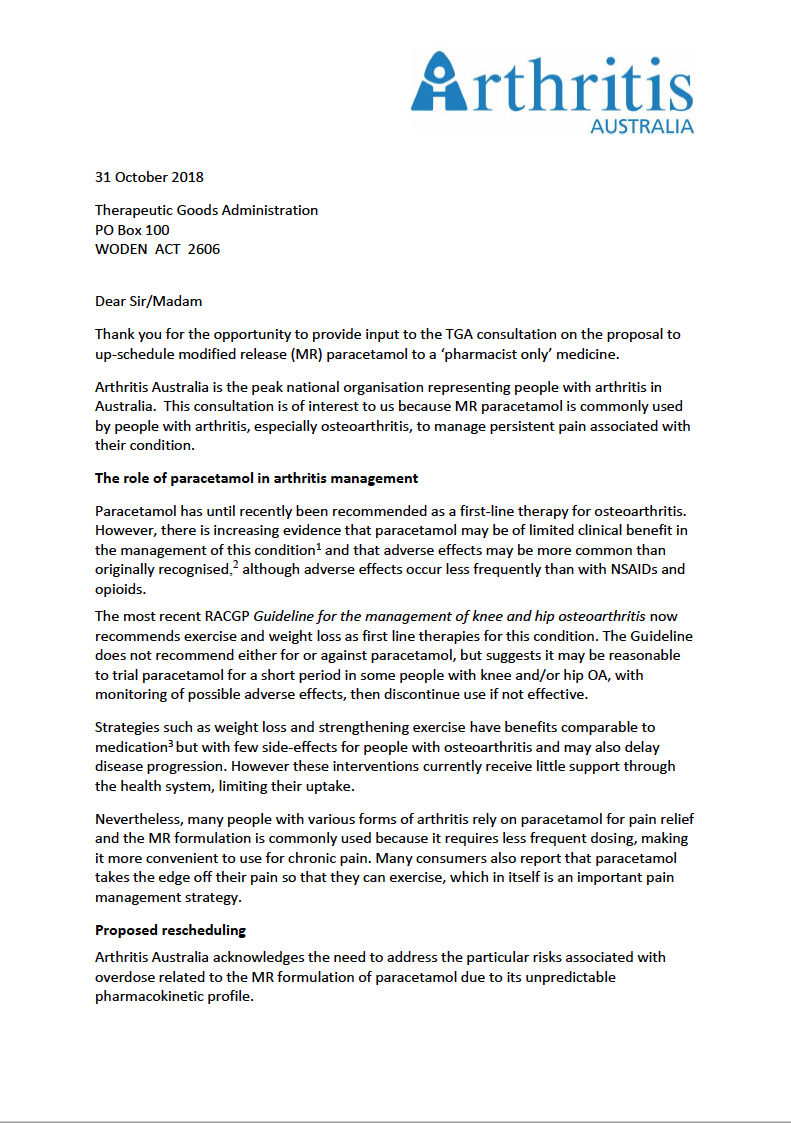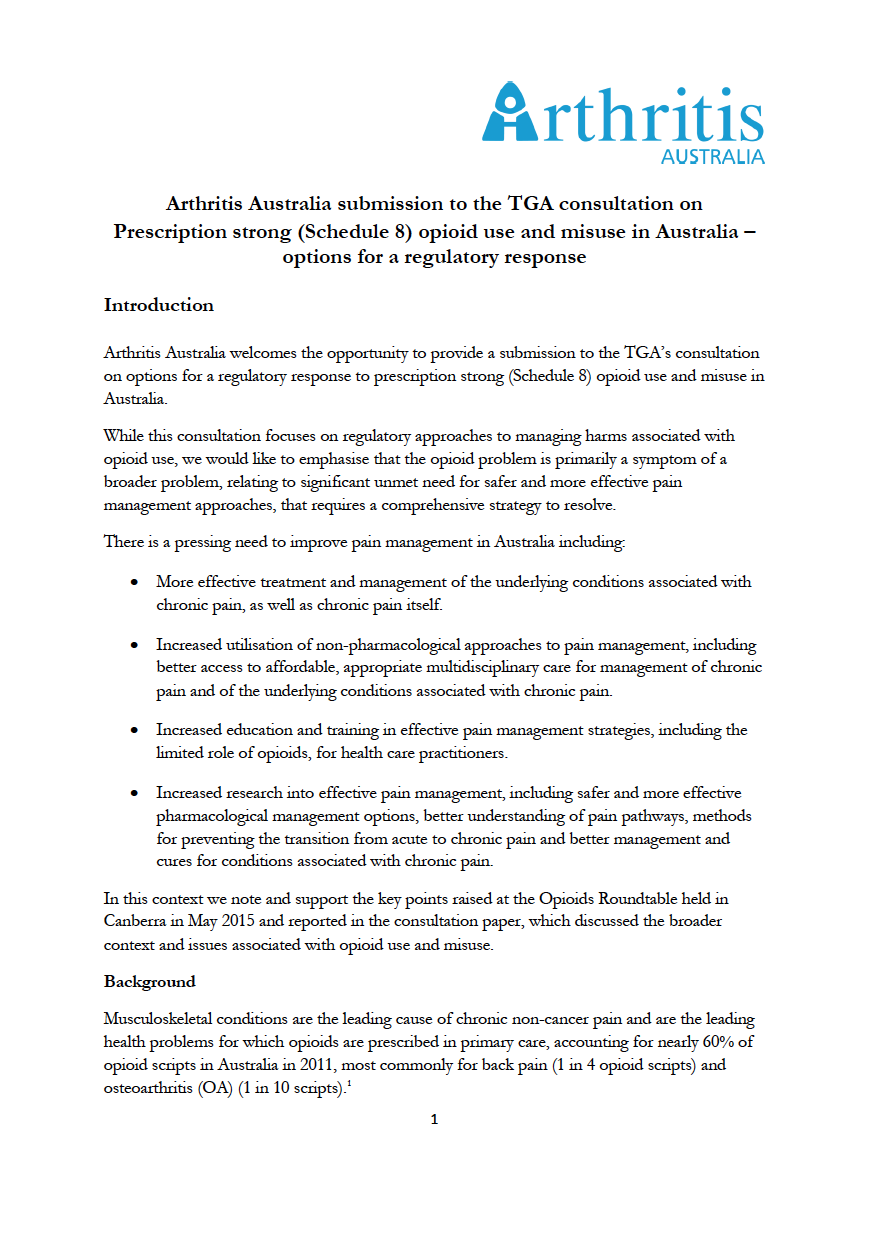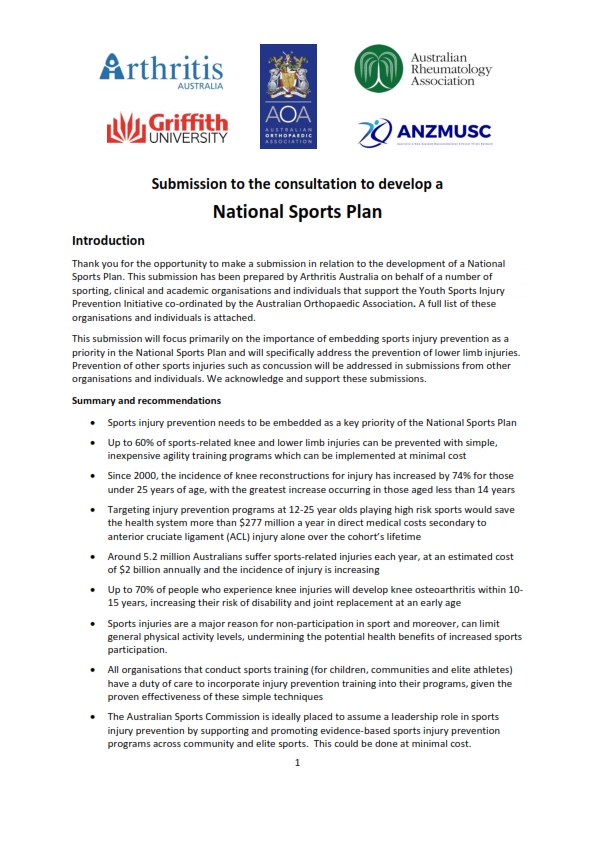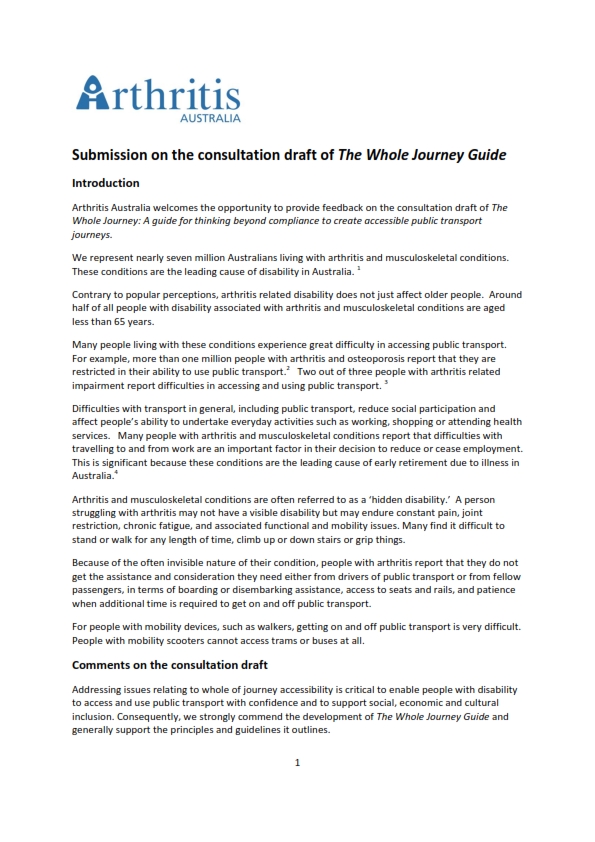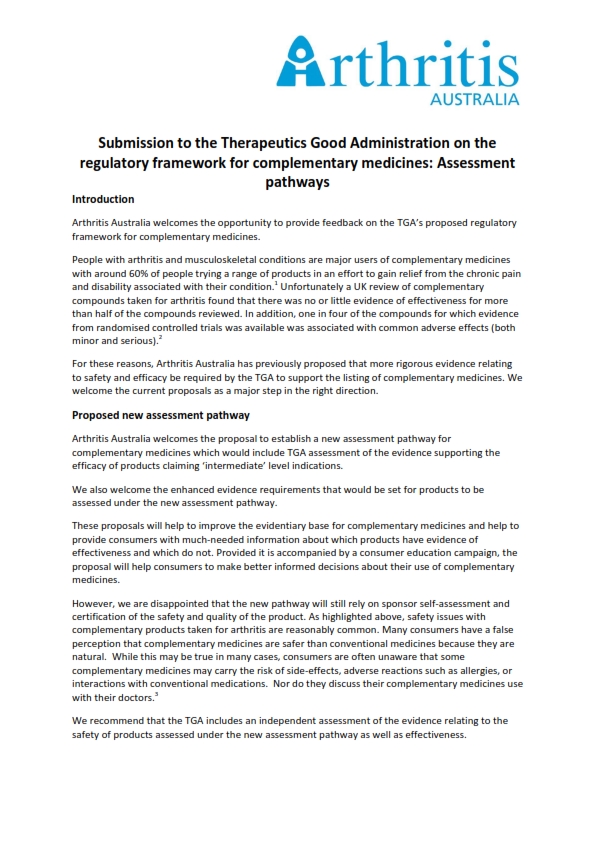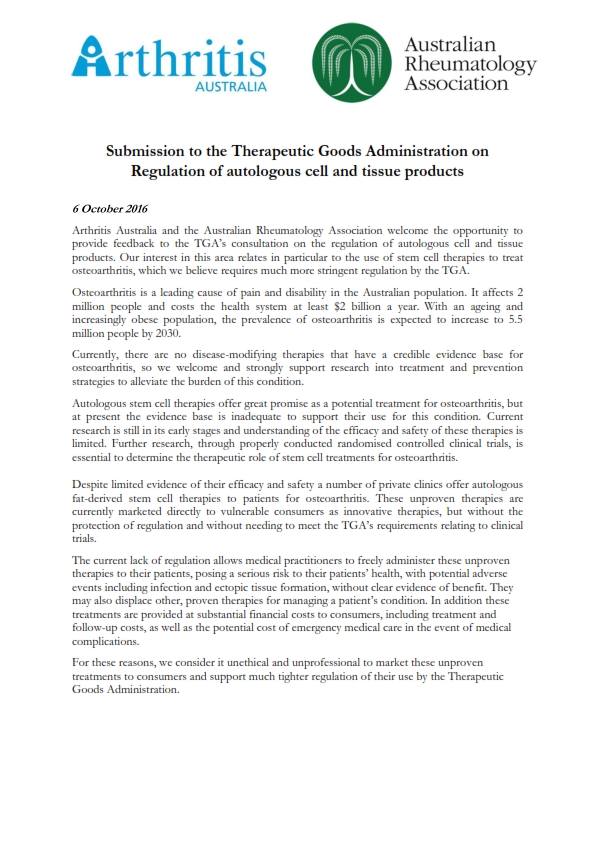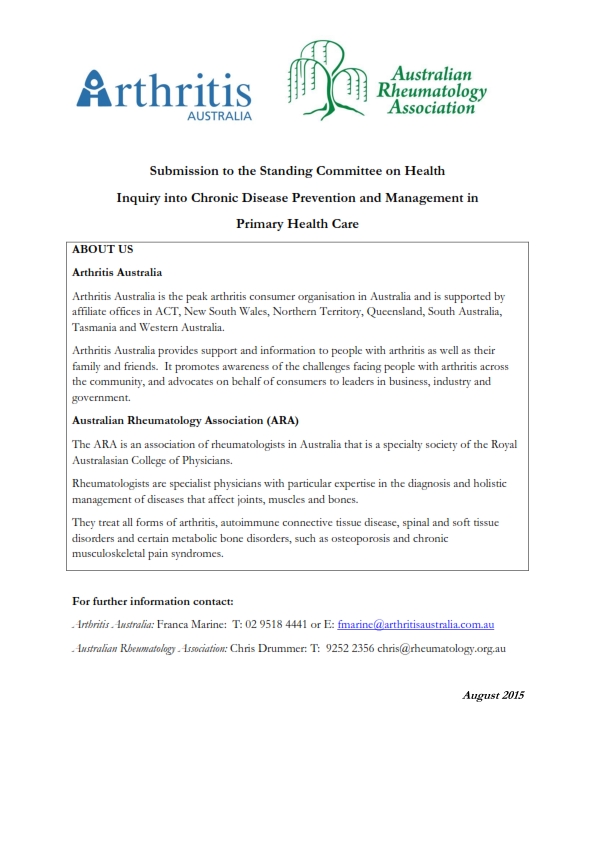Submissions
2025 Budget Submission
2024 Arthritis Australia Submission on Medicines Repurposing Framework
Arthritis Australia Health Technology Assessment Policy and Methods Review
Submission on the refresh of the Chronic Disease Framework
2024 Budget Submission
Equitable and affordable support for one of Australia’s most common and costly health conditions
2023 Budget Submission
Submission on proposed amendments to the Poisons Standard in relation to paracetamol – Therapeutic Goods Administration, ACMS meeting, November 2022
Submission to the Standing Committee on Health, Aged Care & Sport Inquiry into childhood rheumatic diseases
Submission to National Medicines Policy Review 2021
Improving Support for Children and Adults with Arthritis 2019
Rescheduling of Paracetamol 2018
Obesity Epidemic in Australia 2018
Prescription Opioid Use and Misuse in Australia 2018
Providing better care at less cost 2017
Much can be done to prevent and provide better care at less cost for people with arthritis.
The proposals outlined in this submission represent key priorities drawn from the Time to Move: Arthritis strategy. These proposals represent a modest investment which offers the potential to unlock hundreds of millions of dollars a year in reduced health and welfare costs and generate economic benefits through increased productivity.
National Sports Plan 2017
Highlighting the importance of sports injury prevention
Arthritis Australia has highlighted the importance of making sports injury prevention a priority in the National Sport Plan being developed by the Australian government. Sports injuries are a leading cause of osteoarthritis, accounting for around 20% of osteoarthritis of the knee. In particular, rupture of the anterior cruciate ligament (ACL), a major supporting ligament in the knee, leads to knee osteoarthritis within 10 to 15 years in 50 to 70% of cases. Most ACL injuries are sports related and occur in adolescents and young adults. As a result they can develop osteoarthritis of the knee at a relatively young age, substantially increasing their risk of disability and joint replacement compared to their peers.
Yet up to 60% of ACL and other lower limb injuries can be prevented with simple strength and agility training that can be built into normal sports warm-up routines. A sports injury prevention program based on these strategies could be implemented by the Australian Sports Commission at minimal cost, but would save the health system hundreds of millions of dollars by reducing sports injuries and the community burden of osteoarthritis.
Whole of Journey Design Guide 2017
Arthritis Australia made a submission to the government consultation on a draft guide to improving whole-of-journey accessibility for public transport. The key points raised in the submission include:
- People with arthritis and musculoskeletal conditions often experience great difficulty accessing public transport
- Because of the often invisible nature of their condition, people with arthritis, especially younger people report that they do not get the assistance and consideration they need either from drivers of public transport or from fellow passengers, in terms of boarding or disembarking assistance, access to priority seats and rails, and patience when additional time is required to get on and off public transport.
- We welcome the development of the Whole of Journey Guide and support the principles and guidelines it outlines. We would however like to see more specific guidelines included for more complex facilities such as larger train and bus stations and, in particular, airport terminals.
- The needs of commuters with invisible disabilities should be more specifically addressed in the Guide. In particular we support the introduction of a program like that recently implemented by Transport for London to recognise customers with invisible impairments who have difficulty standing but struggle to get a seat on public transport because their impairment is not immediately apparent.
Naming of Biological Medicines 2017
Arthritis Australia made a submission to the Therapeutic Goods Administration’s consultation on naming conventions for biological medicines in Australia.
In considering the issue of naming of biological medicines, our central concerns were to support patient safety and informed patient choice in relation to the use of biological and biosimilar medicines. Our position is that these concerns are best addressed by adopting unique identifiers for biological medicines, rather than using only the International non-proprietary name (INN).
Regulation of Complementary Medicines 2017
Arthritis Australia provide feedback on the TGA’s proposed regulatory framework for complementary medicines.
People with arthritis and musculoskeletal conditions are major users of complementary medicines with around 60% of people trying a range of products in an effort to gain relief from the chronic pain and disability associated with their condition.
Unfortunately a UK review of complementary compounds taken for arthritis found that there was no or little evidence of effectiveness for more than half of the compounds reviewed. In addition, one in four of the compounds for which evidence from randomised controlled trials was available was associated with common adverse effects (both minor and serious).
For these reasons, Arthritis Australia has previously proposed that more rigorous evidence relating to safety and efficacy be required by the Therapeutic Goods Administration to support the listing of complementary medicines.
Stem Cells Regulation 2016
Arthritis Australia and the Australian Rheumatology Association made a submission to the Therapeutic Goods Administration’s review of regulatory arrangments for treatments which use a person’s own cells or tissues. Our interest in this area relates in particular to the use of stem cell therapies to treat osteoarthritis, which we recommend should be subject to much more stringent regulation.
Currently, there are no disease-modifying therapies that have a credible evidence base for osteoarthritis, so we welcome and strongly support research into treatment and prevention strategies to alleviate the burden of this condition.
Autologous stem cell therapies offer great promise as a potential treatment for osteoarthritis, but at present the evidence base is inadequate to support their use for this condition. Current research is still in its early stages and understanding of the efficacy and safety of these therapies is limited. Further research, through properly conducted randomised controlled clinical trials, is essential to determine the therapeutic role and safety of stem cell treatments for osteoarthritis.
Medical Research Future Fund 2016
Arthritis Australia is advocating for increased government research funding for arthritis and musculoskeletal conditions from the Medical Research Future Fund (MRFF). The MRFF was recently established by the Australian Government to boost strategic investment in medical research.
Current government research funding for arthritis and musculoskeletal conditions is disproportionately low relative to the disease burden and cost of these conditions. Strategic investment from the MRFF will boost research capacity to achieve a quantum leap in the quality and utility of research in the musculoskeletal field.
Chronic Disease Prevention and Management 2015
Arthritis Australia’s submission to the Standing Committee on Health Inquiry into Chronic Disease Prevention and Management in Primary Health Care identified a number of primary care based strategies which offer the greatest scope for improving care for people with arthritis. These include:
- Improve non-surgical management of osteoarthritis in primary care
- Support early diagnosis and urgent referral to specialist care for inflammatory forms of arthritis such as rheumatoid arthritis and juvenile idiopathic arthritis
- Improve access to multidisciplinary care for people with severe and complex forms of arthritis
- Provide outreach clinics and telehealth to improve access to specialist services in rural areas and support local primary health care practitioners
- Improve data collection in primary care to increase efficiency in chronic disease prevention and management
Sign up to Arthritis Insights
Regular updates, news and research findings delivered to your inbox:
